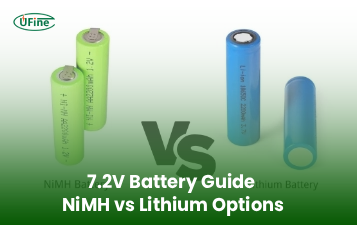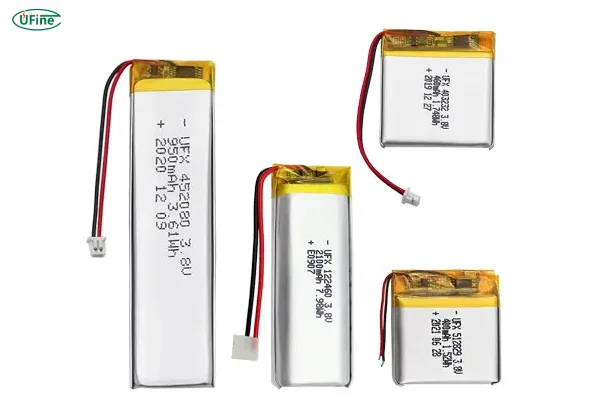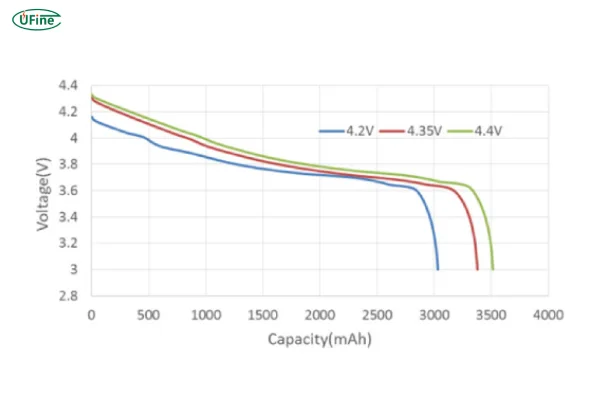
- Part 1. What is a high voltage lithium battery?
- Part 2. The chemistry behind high voltage batteries
- Part 2. How does it differ from standard lithium batteries?
- Part 3. Key advantages of high voltage lithium-ion batteries
- Part 4. Disadvantages and challenges
- Part 4. Common applications of high voltage lithium batteries
- Part 5. Technical challenges and safety concerns
- Part 6. Safety considerations
- Part 7. The future of high voltage lithium-ion technology
- Part 8. Conclusion
- Part 9. FAQs
In this article, we’ll explore what a high voltage lithium-ion battery is, how it differs from conventional lithium-ion batteries, its advantages and challenges, common applications, and where the future may lead.
Part 1. What is a high voltage lithium battery?
A high voltage lithium-ion battery is a type of lithium-ion cell that operates at a higher nominal and maximum voltage compared to standard lithium-ion batteries.
- Conventional Li-ion batteries usually have a nominal voltage of 3.6V or 3.7V, and a maximum charge voltage of 4.2V per cell.
- In contrast, high voltage lithium-ion batteries can operate at 4.35V, 4.4V, or even up to 4.5V per cell.
Why Lithium Batteries Use 3.7V?
This seemingly small voltage increase translates into significantly more energy storage without increasing the battery’s size or weight. It’s a powerful solution for modern applications requiring greater performance in limited space.
Part 2. The chemistry behind high voltage batteries
The core innovation behind high voltage lithium-ion batteries lies in their electrode materials, especially the cathode.
Cathode Materials
- Lithium Nickel Manganese Cobalt Oxide (NMC) and Lithium Cobalt Oxide (LCO) are often modified to withstand higher voltages.
- Advanced coatings and dopants help these materials maintain structural stability during high-voltage cycling.
Electrolyte Formulation
- The electrolyte must be carefully designed to resist oxidation at higher voltages.
- Special additives such as fluoroethylene carbonate (FEC) or lithium bis(fluorosulfonyl)imide (LiFSI) can enhance stability.
Separator and Anode Considerations
- The anode, often made of graphite or silicon-carbon blends, must also resist degradation.
- The separator (which prevents short circuits) must withstand higher temperatures and electrochemical stress.
This combination of materials science enables the safe and efficient operation of batteries at voltages previously considered unsafe.
Part 2. How does it differ from standard lithium batteries?
| Feature | Standard Li-ion | High-Voltage Li-ion |
|---|---|---|
| Nominal Voltage | 3.6V–3.7V | 3.8V–4.35V |
| Max Charge Voltage | 4.2V | 4.35V–4.4V |
| Energy Density | 200–250 Wh/kg | 250–300+ Wh/kg |
| Cycle Life | 500–1000 cycles | 300–800 cycles (shorter due to higher stress) |
| Applications | Smartphones, laptops, power tools | EVs, drones, high-performance electronics |
Key Takeaway: HV Li-ion batteries trade some longevity for higher power and energy density.
Part 3. Key advantages of high voltage lithium-ion batteries
The benefits of high voltage lithium-ion batteries make them highly attractive for cutting-edge technologies:
3.1. Higher Energy Density
- Increasing the voltage increases energy output, as energy is calculated by E = V × Q (voltage × capacity).
- This means a high voltage battery can store more energy in the same physical volume.
3.2. Longer Runtime
- Devices powered by high voltage cells enjoy longer operating times between charges.
3.3. Reduced Weight and Size
- Higher energy per cell means fewer cells are needed for a given capacity, resulting in smaller and lighter battery packs.
3.4. Improved Performance for High-Load Applications
- Ideal for electric vehicles (EVs), drones, and power tools that require high current draw.
Part 4. Disadvantages and challenges
1. Shorter Cycle Life
- Higher voltage = more stress on electrodes → faster degradation.
- Typically lasts 300–800 cycles vs. 500–1000 for standard Li-ion.
2. Thermal Management Issues
- Generates more heat during charging/discharging.
- Requires advanced cooling systems in EVs and high-power devices.
3. Higher Cost
- Specialized materials (e.g., high-voltage electrolytes) increase manufacturing costs by 10–20%.
4. Safety Risks
- Increased risk of thermal runaway if improperly managed.
- Needs strict voltage control to prevent overcharging.
Part 4. Common applications of high voltage lithium batteries
High voltage lithium-ion batteries are increasingly used in a range of demanding applications:
4.1. Electric Vehicles (EVs)
- EVs benefit from extended range, faster acceleration, and reduced battery weight.
- Major automakers are adopting high voltage battery packs to improve miles per charge and charging efficiency.
4.2. Consumer Electronics
- Premium smartphones and laptops utilize high voltage cells for longer battery life without increasing size.
4.3. Aerospace and Drones
- Drones require lightweight, high-capacity power sources, making high voltage batteries ideal for extended flight time and payload support.
4.4. Industrial and Medical Equipment
- Mission-critical applications in medical devices or robotics demand high energy reliability and compact form factors.
Part 5. Technical challenges and safety concerns
While high voltage lithium-ion batteries offer impressive benefits, they also pose unique technical and safety challenges.
5.1. Electrochemical Degradation
- Operating at higher voltages can accelerate electrolyte decomposition and cause cathode instability.
- Repeated high-voltage cycling may lead to capacity loss over time.
5.2. Thermal Runaway Risk
- Higher voltage increases the risk of overheating and thermal runaway, especially if cells are damaged or overcharged.
5.3. Stricter Battery Management Requirements
- Sophisticated Battery Management Systems (BMS) are required to monitor and control voltage at the cell level.
- Balancing and protection circuits must be finely tuned to prevent overcharging or over-discharging.
5.4. Compatibility with Existing Infrastructure
- Not all chargers and inverters are compatible with higher voltage thresholds, requiring hardware upgrades.
Despite these challenges, ongoing research and development are steadily improving the reliability and safety of high voltage lithium-ion batteries.
Part 6. Safety considerations
1. Overcharging Risks
- Exceeding 4.4V per cell can cause electrolyte breakdown and fires.
2. Thermal Runaway Prevention
- Requires:
- Battery Management Systems (BMS)
- Temperature sensors
- Fire-resistant separators
3. Handling and Storage
- Store at 30–50% charge in cool environments to prolong lifespan.
Part 7. The future of high voltage lithium-ion technology
As industries push for cleaner energy and smarter mobility, high voltage lithium-ion batteries are expected to play a vital role. Here’s what the future may hold:
7.1. Advanced Materials Development
- Researchers are exploring solid-state electrolytes and next-gen cathode materials to support even higher voltages safely.
7.2. Improved Cycle Life
- New electrolyte additives and surface treatments will improve longevity at high voltages, making them suitable for grid storage and long-life applications.
7.3. Integration with Renewable Energy
- High voltage batteries are ideal for solar and wind energy storage, where energy density and efficiency are key.
7.4. Rapid Charging Capabilities
- With better thermal and electrical design, high voltage systems can achieve ultra-fast charging—a major boost for EV adoption.
7.5. Wider Adoption Across Industries
- From electric aircraft to autonomous delivery robots, high voltage lithium-ion batteries will enable innovation across sectors.
Part 8. Conclusion
The high voltage lithium-ion battery is a compelling advancement in battery technology, offering higher energy density, better performance, and more compact designs. While challenges remain in terms of safety and longevity, continuous innovation is closing the gap between ambition and reality.
Whether you’re designing electric vehicles, portable electronics, or industrial power systems, high voltage lithium-ion batteries offer a glimpse into the future of energy storage—more powerful, more compact, and more efficient than ever before.
Part 9. FAQs
Can high voltage lithium-ion batteries be retrofitted into devices designed for standard batteries?
In most cases, no. Devices designed for standard lithium-ion batteries often have strict voltage limits for safe operation. Retrofitting a high voltage lithium-ion battery without modifying the device’s power management system could lead to overheating, malfunction, or permanent damage. Always consult the manufacturer or an electrical engineer before considering such modifications.
Are high voltage lithium-ion batteries affected by cold weather performance?
Yes, like all lithium-ion batteries, high voltage variants experience reduced performance in cold temperatures, including lower capacity and slower charge rates. However, due to their tighter chemical tolerances, high voltage batteries may be more sensitive to cold-induced resistance increases. Specialized battery heaters or cold-weather-compatible formulations are often used in such environments.
What role does a Battery Management System (BMS) play in high voltage lithium-ion batteries?
The BMS is crucial for ensuring safety and performance. In high voltage systems, the BMS monitors individual cell voltages, balances charge across cells, prevents overvoltage or undervoltage, and protects against overcurrent or overheating. Without an advanced BMS, the risk of battery failure or fire increases significantly.
How do manufacturers ensure the safety of high voltage lithium-ion batteries during transport?
High voltage lithium-ion batteries must comply with international transport regulations, including UN 38.3 testing and IEC 62133 certification. During shipping, batteries are often transported at a reduced charge (typically 30-50%), packed in fire-resistant containers, and labeled according to hazard class. These measures reduce the risk of thermal events during transit.
Is there a standard voltage range that defines a “high voltage” lithium-ion battery?
There’s no single universal standard, but in general, any lithium-ion cell that charges above 4.2V per cell is considered high voltage. Common high voltage ranges include 4.35V, 4.4V, and 4.5V per cell. For battery packs, anything above 60V nominal is often classified as high voltage in the context of EVs and industrial applications.
Related Tags:
More Articles

NiMH vs Lithium 7.2V Battery and Charger: Which Is Better?
Compare 7.2V NiMH vs Lithium batteries and chargers in 2025. Learn runtime, weight, charging, lifespan, and cost to choose the best for your device.
How to Choose the Right 7.2V Battery and Charger for Your Device?
Learn how to choose the right 7.2V battery and charger for optimal performance, safety, and longevity across RC, tools, medical, and industrial devices.
Big Square Battery Safety Standards You Must Know
Learn key safety standards for big square batteries to avoid fire risks, shipping delays, and compliance issues in EV, industrial, and energy storage projects.
Big Square Battery Applications in Solar & Industrial Equipment
Big square batteries deliver high capacity, stable output, and long life for solar, industrial, and backup power. Explore key uses and advantages.
Big Square Battery vs Cylindrical Battery: Complete 2025 Guide for EVs, ESS & Industrial Devices
Choosing the right battery is key for designers and engineers. Compare big square vs cylindrical batteries to find the best fit for your application.




